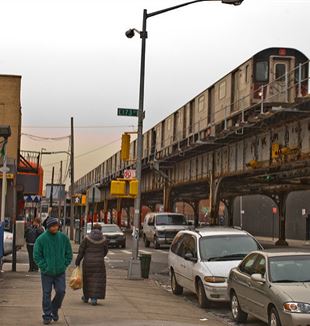
The Christian Challenge in the Bronx
We offer the story of Father Carlos Acosta, a Uruguayan priest who has experienced the Movement as a road for living the priestly vocation amidst the people.In order to get your bearings among the Marian devotions of the East Bronx, you need a special map. Puerto Ricans, Dominicans, Mexicans, and Hondurans, arriving in successive waves from Central America, have transplanted to New York the traditions of their countries of origin. “The result is that everyone has a Madonna to venerate. There is a special devotion, and our church is open to embrace all the respective feasts,” relates Father Carlos Acosta, who from the second half of last year has been pastor at St Luke’s, a church in the heart of this multi-ethnic enclave.
Being pastor of such a variegated parish is a challenge, but it also is fascinating for a Uruguayan priest who arrived in New York in the 1970’s, who had spent 10 years in Argentina before transferring to the USA, and who knows well the spiritual richness of the various Hispanic Catholic traditions. Father Acosta previously was a pastor in Manhattan, in a very different environment. “Here in the Bronx,” he says, “people are more tied to the activities of the Church. On Sunday, there are a lot of people at Mass. They are all more united compared to my congregation in Manhattan.”
The problem is that the people of the Bronx work in humble jobs with rhythms and hours that are often exhausting. “For this reason, I visit the homes, I go see them if they are working too much. I try to go around among my parishioners at least twice a week, to read them the Gospel and to help them know Jesus better. And above all, I am with them with Fr Giussani in my heart.”
Father Acosta discovered the Movement three years ago, through meeting Monsignor Lorenzo Albacete. From then on, he has lived the experience of School of Community and the friendship of a group of Spanish-speaking priests of New York. “The School of Community,” says Fr Carlos, “helps me to understand the Church; it offers me a new vision of the Church. For me, it is a way for a new encounter with Jesus, and certainly helps me live the responsibility of the parish.” “The work of the School of Community,” he adds, “makes me better understand my vocation as a priest, and the charism of the Movement helps me understand how I have to be with my parishioners.”
Sunday afternoons, Father Carlos hosts a School of Community in St Luke’s Church, a parish in an extremely populous zone of the Bronx, framed by the gigantic elevated highways that daily support the invasion of hundreds of thousands of cars of commuters entering or leaving Manhattan. “For now, there are eight of us at the School of Community,” says Fr Carlos, “and the people who come are not of my parish, they’re friends who arrive from other parts of the city. But I can’t wait till I can invite some of my parishioners, even though here we would need to have School of Community in Spanish, because the people prefer it.”
One of the greatest challenges of Fr Carlos’ life as pastor is to help his faithful to continue to understand the importance of the family “as the place where love, help, and support of the other enable us to live Jesus.” It is a delicate and decisive task, especially with the new generations of immigrants, who don’t always have the clear concept of family that their parents have. “It is particularly important for me,” he relates, “to help the Mexicans, who are the most religious, to communicate the faith to their children, to keep alive their culture and their traditions, the roots of faith that they have.”